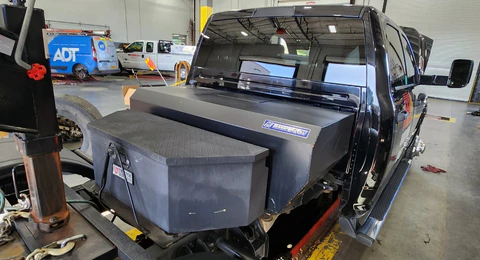Hot shot trucking plays a vital and dynamic role in the transportation industry, focusing on efficiently delivering smaller, time-sensitive loads across various distances. Unlike traditional trucking modes requiring larger vehicles like semi-trailers, hot shot trucking typically employs smaller, agile trucks that can navigate tighter areas while still maintaining a strict schedule. This specialized sector often handles freight such as building materials, farm equipment, and machinery, emphasizing speed and reliability. To excel in this fast-paced field, drivers and operators must prioritize efficiency and equip themselves with the right tools and technological solutions. One of the essential components in modern trucking is using the best truck ELD systems, which are crucial for tracking hours of service, ensuring compliance with regulations, and enhancing overall safety. ELDs eliminate the need for manual logbooks, thereby reducing human error and significantly saving time.
In this high-paced industry, having a thorough understanding of best practices and how to integrate technological advancements can make a significant difference in operational effectiveness. This article aims to delve into the essential tools, strategies, and technologies that can help hot shot truckers maximize their operations and achieve a competitive edge in the industry.
Introduction to Hot Shot Trucking
Hot shot trucking refers to the transportation of smaller loads that require quick delivery, often operating with tight schedules and a need for meticulous planning and precision in execution. Unlike traditional trucking, which involves scheduled and sometimes slower shipments, hot shot trucking employs smaller vehicles like medium-duty trucks and trailers such as flatbeds or lowboys. This method is particularly advantageous for time-critical shipments that do not need a full-sized semi-truck but demand the same level of care and speed in getting from point A to point B. The flexibility and adaptability of hot shot trucking make it a preferred choice for an array of industries requiring rapid response transport solutions.
Essential Tools for Hot Shot Trucking Success
Thriving in hot shot trucking requires more than just experience behind the wheel or knowledge of logistics routes. It necessitates the integration of essential tools that streamline operations and enhance productivity. At the forefront of these tools is the Electronic Logging Device (ELD), which is vital for complying with federal regulations to monitor and manage driver hours. ELDs automatically record driving time, helping drivers adhere to the legally mandated hours of service. By utilizing ELDs, truckers avoid penalties associated with non-compliance while optimizing their schedules to ensure maximum uptime. Information from the Federal Motor Carrier Safety Administration indicates that ELDs have transformed the formerly manual and error-prone process of logkeeping into a seamless, automated task, significantly reducing the scope of human error and administrative workload.
Navigating Regulations and Compliance
Regulatory compliance is a cornerstone of the trucking sector, especially in the domain of hot shot trucking, where operations are intense and the stakes high. Drivers must comply with hours of service regulations set forth to mitigate the risks associated with fatigued driving. In order to protect their health, safety, and general road safety, these regulations make sure that drivers get enough sleep and downtime in between shifts. Utilizing technology to support compliance efforts upholds safety standards and enhances operational efficiency by reducing unnecessary rest times and optimizing drive schedules. Compliance is further simplified by the use of ELDs, which provide real-time tracking and reporting features convenient for audits and inspections.
Technological Advancements in Trucking
The trucking industry is witnessing rapid technological shifts that hold great potential to redefine how operators and drivers function on the road. Telematics, for instance, combines GPS technology with onboard diagnostic features to provide vehicle tracking, as well as monitoring of mechanical and driver behavior metrics. This technology helps operators optimize routes based on real-time traffic conditions, forecast better maintenance schedules, and enhance overall fuel efficiency. In addition, automation in the form of advanced driver-assistance systems (ADAS) is increasingly being integrated into vehicles, offering features such as adaptive cruise control and lane-keeping assistance. Such technological improvements result in safer driving conditions and lower operational costs, reinforcing the significance of staying up-to-date with current technological trends.
Safety and Efficiency Best Practices
Ensuring safety and efficiency on the road involves a keen understanding of both technology and traditional best practices. Regular vehicle maintenance is crucial; a well-serviced vehicle reduces the likelihood of breakdowns and ensures reliability. Proper load-securing practices need to be observed to avoid cargo shifting during transport, which could lead to accidents or load losses. Drivers must be aware of road conditions and have contingency plans for adverse weather scenarios. Familiarity with high-traffic zones and alternative routes can help mitigate delays. Moreover, staying updated on weather forecasts and traffic reports allows for proactive adjustments that enhance both safety and efficiency.
Future Trends in Hot Shot Trucking
The hot shot trucking sector is on the cusp of exciting advancements, particularly as sustainable practices garner more attention. The advent of electric trucks presents an opportunity to lower emissions and operational costs, aligning with broader environmental sustainability efforts. Additionally, increased digitization and artificial intelligence are set to play pivotal roles in optimizing logistics and fleet management. For example, data-driven decision-making could significantly improve efficiency by providing insights into demand patterns and enabling more effective resource allocation. Insights from Transport Topics suggest that harmonizing sustainability practices and technological innovations will create unforeseen opportunities and reshuffle existing operational paradigms.
Conclusion: Driving Success in Hot Shot Trucking
Efficiency and innovation form the backbone of prosperous hot shot trucking operations. By embracing the right technological tools, staying informed about industry trends, and adopting best practices, drivers and companies can effectively navigate the challenges posed by this demanding industry. As the sector evolves with technological advancements and regulatory changes, adaptability will remain a key trait for those seeking enduring success. This dynamic field offers rich opportunities for those willing to innovate and focus on quality and efficiency, ensuring a bright future for both newcomers and seasoned professionals.



